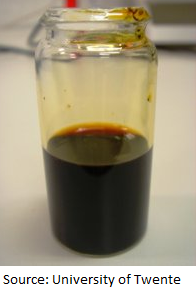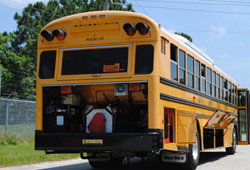 Researchers in The Netherlands have developed a catalyst that helps get more energy from biomass to more closely match more conventional sources of oil-based energy. This article from the University of Twente says the new, simple catalyst improves the quality of this oil before it is even transported to the refinery and was selected as part of the follow-up technology from CATCHBIO, the national research program looking to make sure Europe acheives 20 percent of its fuel from renewable sources by 2020.
Researchers in The Netherlands have developed a catalyst that helps get more energy from biomass to more closely match more conventional sources of oil-based energy. This article from the University of Twente says the new, simple catalyst improves the quality of this oil before it is even transported to the refinery and was selected as part of the follow-up technology from CATCHBIO, the national research program looking to make sure Europe acheives 20 percent of its fuel from renewable sources by 2020.
The oil in current-generation biofuel does not come from fruit or seed, such as palm or rape seed oil but, for example, from plant residues, pruning waste and wood chips. As a result, there is no longer any undesirable competition with the food supply. Converting plant residues, which take up a lot of space, into oil simplifies transport considerably and the product can go directly to a refinery. Blending with crude oil is already possible. However, the quality of this oil does not yet equal that of crude oil. It has a lower energy content per litre, is acid and still contains too much water. The catalyst developed by Prof. Leon Lefferts and Prof. Kulathuiyer Seshan’s group Catalytic Processes and Materials (MESA+ Institute for Nanotechnology/Green Energy Initiative) significantly improves the quality and energy content of the oil.
This is realized by heating the oil in nitrogen to 500 degrees Celsius and by applying a simple catalyst: sodium carbonate on a layer of alumina. By using this method, the energy content of the oil can be boosted from 20 to 33-37 megajoule per kilogram, which is better than crude oil and approximates the quality of diesel. The technology, recently defended by PhD candidate Masoud Zabeti, is already being tested by KIOR in Texas, USA, on a small industrial scale, with a production of 4,500 barrels of oil per day. The quality of the oil can be improved even more by adding the material caesium, as well as sodium carbonate. “By doing so, we can, for instance, also reduce the aromatics, which are harmful when inhaled”, says Prof. Seshan.
The technology is being studied in cooperation with several other European universities and research institutes.







